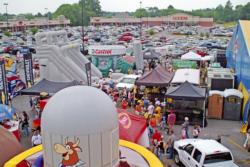FLW Outdoors: 10 years of progress
A look back at FLW Outdoors and the shaping of America’s largest and most prestigious fishing-tournament organization
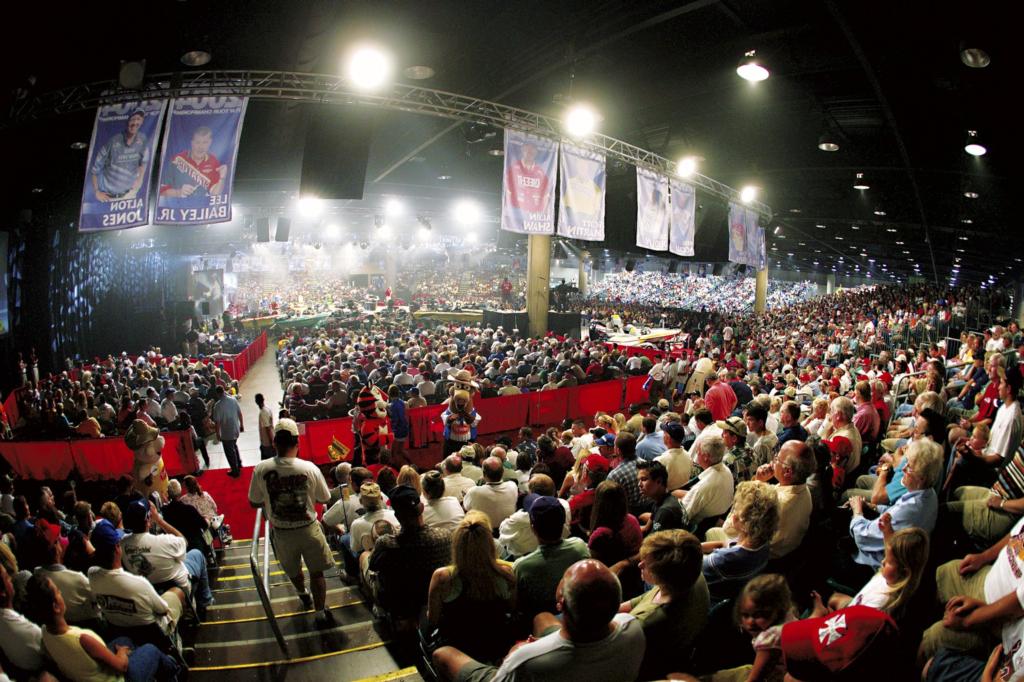
On June 24, 1997, Irwin L. Jacobs, the CEO of Genmar Holdings, addressed professional bass anglers for the first time. It was the eve of the Wal-Mart FLW Tour’s Forrest Wood Open, being held on Lake Minnetonka in Minnesota, where a record $1 million was going to be paid to bass anglers, and the winner was taking home an unprecedented $200,000 in cash.
Jacobs, who had purchased FLW Outdoors (then known as Operation Bass) in July of 1996, personally addressed the anglers to make them aware of the monumental developments that were coming to the sport of competitive bass fishing.
For bass pros, it was their first opportunity to get a look at the man who, in his short time at FLW Outdoors, had already persuaded Wal-Mart, the world’s largest retailer, to sponsor professional bass fishing – a monumental accomplishment in and of itself.
Jacobs told the crowd the $200,000 top prize they were about to fish for and the subsequent national television exposure of the Forrest Wood Open was only a fraction of what was to come from FLW Outdoors.
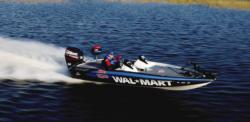 As plans for the 1998 Wal-Mart FLW Tour season were unveiled that evening, anglers were awed by the sums of money offered and the innovative ways FLW Outdoors planned to cover professional bass fishing in the following year. In addition to $150,000 going to the Wal-Mart Open winner, and $200,000 going to the Forrest Wood Open winner, it was announced that the 1998 FLW Tour season would culminate with a Tour Championship where the winner would pocket $250,000.
As plans for the 1998 Wal-Mart FLW Tour season were unveiled that evening, anglers were awed by the sums of money offered and the innovative ways FLW Outdoors planned to cover professional bass fishing in the following year. In addition to $150,000 going to the Wal-Mart Open winner, and $200,000 going to the Forrest Wood Open winner, it was announced that the 1998 FLW Tour season would culminate with a Tour Championship where the winner would pocket $250,000.
Anglers were still digesting payout numbers and the amount of ramped-up national exposure Jacobs was promising when he outlined another major change that challenged the conventions of bass fishing’s big leagues – a new logo policy that would prohibit the displaying of any company logos other than those of official FLW Tour sponsors during days three and four of an FLW Tour event.
With that announced, an air of skepticism filled the room. Some anglers began to grumble about not being able to promote their own sponsors during the “TV days” of an event.
The anglers’ discord was a natural response. Up until that point in competitive bass fishing, tournament trails had always welcomed the open promotion of an angler’s sponsors. The notion of protecting a tour’s corporate sponsors by disallowing the logos of competitive companies was a foreign concept to bass pros, but then again, so was the notion of a $250,000 cash payout to the winner of a no-entry-fee championship.
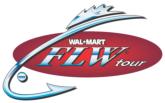 As the meeting broke up that night, some were excited about the prospects of the “new” FLW Tour, some were skeptical and others predicted it would never last.
As the meeting broke up that night, some were excited about the prospects of the “new” FLW Tour, some were skeptical and others predicted it would never last.
Jacobs still remembers that pivotal evening and some of the early criticism of the FLW Tour that came from it.
“In the beginning, we were reprimanded from all corners of the fishing world for some of our policies,” Jacobs said. “But I knew in order to make this thing work, we were going to have to go down a path that this sport had never been down before; we were going to have to give sponsors more value than they ever expected.
“I can even remember when Roland Martin remarked that all I cared about was the sponsors and not the anglers,” Jacobs said. “It’s not that I didn’t care about the anglers – it was a chicken-or-the-egg kind of thing – I didn’t even have anything to care for the anglers with until I took care of the sponsors first.”
Now, almost 10 years later, FLW Outdoors is an extremely busy organization. In 2005, the company is offering purses totaling $30 million to anglers across 214 events over eight fishing circuits covering four different species.
And when Jacobs reflects on how far his vision has come, he simply smiles and says, “I am very pleased with where we are now, but there is a whole lot more that I want to accomplish.”
In 1996, FLW Outdoors recognized a growing demand among enthusiastic bass anglers for well-organized bass tournaments. The company’s goal was to grow the sport and increase its participation base by supplying these anglers with plenty of opportunities to compete in professionally conducted bass tournaments.
It is the same fundamental goal Mike Whitaker had back in 1979 when he started Operation Bass. Whitaker wanted to create a weekend-oriented bass tournament trail geared toward anglers who could not take time off work to compete.
What Jacobs sought to do was build on Whitaker’s foundation. Jacobs envisioned a complete hierarchy of tournament circuits that would accommodate everyone from the full-time touring professional to the beginner. The key to the hierarchy would be a series of qualification pathways within the system that allowed anglers to advance to the next level of competition and correspondingly bigger payouts.
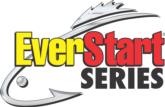 After assuming Whitaker’s foundation in 1996, Jacobs’ first major contribution was to build the top tier – the prestigious Wal-Mart FLW Tour – complete with nationally televised tournament coverage and unprecedented payouts. Then in 1998 he added the successful EverStart Series, which bridged the gap between the Wal-Mart Bass Fishing League and the FLW Tour.
After assuming Whitaker’s foundation in 1996, Jacobs’ first major contribution was to build the top tier – the prestigious Wal-Mart FLW Tour – complete with nationally televised tournament coverage and unprecedented payouts. Then in 1998 he added the successful EverStart Series, which bridged the gap between the Wal-Mart Bass Fishing League and the FLW Tour.
“Wherever we recognized demand, we wanted to provide tournaments,” Jacobs said.
Along the way, FLW Outdoors also made some other ingenious moves in its tournament structure.
One was to adopt a “pro-am” format for every bass-fishing event, from the BFL to the FLW Tour.
After going to a pro-am format, FLW Outdoors also recognized that “amateurs” had much more value than that of a back-deck watchdog. These anglers were the future participants of the sport and many were professional caliber in their own right.
As a result, FLW Outdoors coined the term “co-angler” to describe the angler in the back of the boat and opted to give co-anglers greater recognition and opportunity by allowing them to gather points, earn championship berths and qualify for pro fields from the back deck.
By 2000, FLW Outdoors had completed a three-tiered bass tournament system, and by doing so, had made tournament bass fishing accessible on all levels.
“And now, in the same way, we have expanded into walleyes, redfish and kingfish,” Jacobs said. “Tournament anglers are our customers, and we want to serve them as best we can. And to put it in perspective, FLW Outdoors presently provides a grand total of 79,000 slots for anglers in tournaments.”
Unprecedented payouts
One thing, in particular, Jacobs pledged when he took over the reigns at FLW Outdoors was higher payouts – and he certainly made good on his promise.
Over the last decade, the FLW Tour has set the standard in professional fishing payouts on several fronts.
For starters, the FLW Tour scratched “cash and merchandise” payouts and went straight to cash. Starting in 1997, $100,000 was paid for first place in all regular season events, making the $100,000 top-prize payout a standard in professional fishing.
The FLW Tour was the first fishing tour to pay 190 percent of the entry fees taken in and it was the first to pay all the way down to 75th place.
The FLW Tour was first to reach the $150,000, $200,000 and $250,000 first-place cash-award marks in professional bass fishing.
As FLW Outdoors eyed the $500,000 mark for the winner of a single tournament, anglers expressed concern that tour payouts had grown too top heavy. The organization listened and made another payout announcement in 2003 that once again made history.
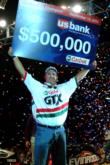 The announcement was that the winner of the FLW Tour Forrest L. Wood Championship would receive $500,000. And for those wanting a fuller payout down the field, the 2003 championship guaranteed every angler at least $12,200 just for qualifying for the event.
The announcement was that the winner of the FLW Tour Forrest L. Wood Championship would receive $500,000. And for those wanting a fuller payout down the field, the 2003 championship guaranteed every angler at least $12,200 just for qualifying for the event.
For the 2004 season, FLW Outdoors again deepened the payouts down the field. The Wal-Mart Open and the Forrest Wood Open both paid $10,000 down through 50th place, meaning one out of every four pros in these events would take home $10,000.
That particular payout increase met with such a resounding response from anglers that in 2005, the Wal-Mart FLW Tour guaranteed $10,000 through 50th place in all of its regular-season events. Additionally, the last-place payout in the Forrest L. Wood Championship is now $15,000.
Today, the height, depth and breadth of FLW Tour payouts are still unmatched in tournament bass fishing.
Increased exposure
Along with enhanced payouts, Jacobs also vowed to give tournament bass fishing never-before-seen levels of exposure – another promise he has made good on.
“Look at the history of any successful sport and it’s about money and television,” Jacobs said. “Golf, tennis, baseball – that’s what made those sports – money and lots of exposure.”
Starting in 1997, FLW Outdoors forged new ground in televising bass tournaments when the FLW Tour became the first fishing tour to feature live dialogue between show hosts and anglers via cell phone during the tournaments.
In 1998, FLW Outdoors broadcast its first live weigh-in to Wal-Mart stores nationwide via Wal-Mart’s in-store television network.
In 1999, FLW Outdoors and FOX made history by broadcasting the first live fishing tournament, the Ranger M1 Millennium Tournament, following an afternoon NFL broadcast.
FLW Outdoors has also been successful in getting bass fishing into other forms of mainstream media. In terms of newspaper coverage, the FLW Tour has been featured in USA Today, the Wall Street Journal, the Los Angeles Times and the New York Times to name a few of the larger papers.
In terms of mainstream television, CNN has featured the FLW Tour’s phenomenal growth along with ABC’s “World News Tonight.”
Prominent publications such as Sports Illustrated, Fortune, Business Week and Forbes have all featured articles on the FLW Tour as well.
In house, FLW Outdoors produces FLW Outdoors Magazine and the FLWOutdoors.com Web site.
The Web site itself has set a few benchmarks in bass-fishing coverage. In addition to daily coverage of FLW Outdoors tournaments, the site offers an up-to-the-minute “Angler Profile” that compiles results, winnings and photos of individual FLW Outdoors participants and teams. If you have fished an FLW Outdoors event since 1996, you have your own profile on the Web site.
In 2003, FLWOutdoors.com introduced FLW Live, featuring live streaming audio, video and leaderboards from every FLW Tour stop plus other selected events.
 Perhaps the proudest moment for FLW Outdoors’ push for increased exposure of professional fishing, however, came recently when the company signed a television deal with FSN (Fox Sports Net) for 51 weeks of television programming surrounding FLW Outdoors tournaments.
Perhaps the proudest moment for FLW Outdoors’ push for increased exposure of professional fishing, however, came recently when the company signed a television deal with FSN (Fox Sports Net) for 51 weeks of television programming surrounding FLW Outdoors tournaments.
“Television is a huge component to growth, and quite frankly, up until this year, I don’t think we were anywhere close to where we needed to be in television,” Jacobs said. “But this year with FSN, I think we have hit the nail on the head. We are covering fishing in new ways. The ratings are fabulous and Fox tells us that they have exceeded their expectations.”
Corporate America meets professional fishing
New levels of exposure, record payouts and increased opportunity in professional fishing are all derivatives of the amount of corporate sponsorship FLW Outdoors has attracted to the sport.
“When I first stepped into professional fishing, I realized that the endemic companies alone – the boat, the engine, the tackle companies – could not supply the amount of money we needed to do what we wanted to do in this business,” Jacobs said. “Going outside the fishing market was crucial in making it work.”
But nonendemic giants that make everyday consumer products like batteries, film, soft drinks, potato chips, candy bars and cereal are a tough sell. Many higher profile sports are constantly competing for their advertising dollar.
“That’s why it was so critical, and still is, that we create value for the companies that is far beyond what they expect,” he said. “We had to take an alternative approach to make it work. Yes, it ruffled some feathers in the beginning, but that’s the way it had to be to get nonendemics like Snickers, 7 UP, Tyson, Pedigree, Chevy, Kellogg’s and Castrol excited about this sport.”
When corporate America finally cracked the door to hear Jacobs’ earnest pitch about the potential value of the fishing market, he was soon winning them over.
Since then, FLW Outdoors has led the way in corporate relationships with innovative ways of providing exposure for sponsors.
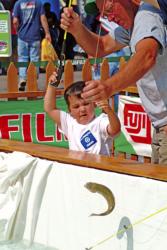 One of those primary innovations was the Family Fun Zone, a carnival-like sponsor exposition held in conjunction with FLW Tour weigh-ins. The Family Fun Zone, which is free and open to the public, allows sponsors to hand out samples and educate consumers about their products.
One of those primary innovations was the Family Fun Zone, a carnival-like sponsor exposition held in conjunction with FLW Tour weigh-ins. The Family Fun Zone, which is free and open to the public, allows sponsors to hand out samples and educate consumers about their products.
Fishing pros stay on hand for the Fun Zone to talk fishing with fans and sign autographs. Many of the pros themselves are also sponsored by FLW Tour sponsors, another example of FLW Outdoors’ effort to bring greater visibility to their supporters.
In 1999, FLW Outdoors brought a critical innovation to the competitive fishing marketplace through the use of wrapped boats, which turned bass boats into mobile billboards on the water and the nation’s highways. Now corporate-wrapped boats have caught on in a big way in other circuits as a viable marketing tool.
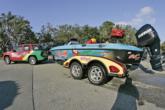 “I think fishermen and other tours that may have bad mouthed us in the past are starting to see what we had in mind from the beginning,” Jacobs added. “Now they are implementing the very things they reprimanded us for early on.”
“I think fishermen and other tours that may have bad mouthed us in the past are starting to see what we had in mind from the beginning,” Jacobs added. “Now they are implementing the very things they reprimanded us for early on.”
The impact FLW Outdoors has had on professional fishing is undeniable. The ripple effect of its increased participation, payouts and exposure has been felt throughout the fishing and outdoors marketplace. Consider that over the last 10 years the FLW Tour alone has paid back more than $46 million dollars to anglers.
Now that Irwin Jacobs has seen some of his visions manifest into reality, he is more excited about the future of competitive fishing today than he was a decade ago.
He never takes his eye off the horizon and parts with his signature hint of things to come:
“I’m working on something that I promise will take this sport up 20 notches. It’s an idea I’ve had for years and its coming closer to reality. If I can pull it off, it will get people who don’t even fish interested in fishing.”
Timeline
1996
January: Mike Surman of Boca Raton, Fla., wins the first FLW Tour event on Lake Okeechobee. He receives $18,500 (Ranger boat) for the win.
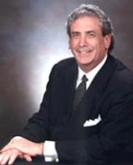 July: Irwin Jacobs acquires Operation Bass, the predecessor to FLW Outdoors, and announces that Wal-Mart will be the title sponsor of the FLW Tour.
July: Irwin Jacobs acquires Operation Bass, the predecessor to FLW Outdoors, and announces that Wal-Mart will be the title sponsor of the FLW Tour.
September: FLW Outdoors announces 190 percent payback for the 1997 FLW Tour season. Payout features $100,000 first-place prize and checks issued to 75 places in all regular-season events.
November: Steve Daniel becomes the first angler to win two FLW Tour events (Okeechobee and Sinclair) in a single season.
December: Peter Thliveros becomes the FLW Tour’s first Angler of the Year.
1997
January: Wal-Mart FLW Outdoors television initiates live dialog between anglers and show hosts via cell phone.
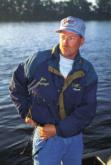 June: The Forrest Wood Open becomes professional bass fishing’s first $1 million event. Jim Moynagh wins it and receives an unprecedented $200,000 in cash.
June: The Forrest Wood Open becomes professional bass fishing’s first $1 million event. Jim Moynagh wins it and receives an unprecedented $200,000 in cash.
June: Clark Wendlandt is crowned the 1997 Land O’Lakes FLW Tour Angler of the Year.
November: David Fritts becomes the first angler to win three FLW Tour events (Eufaula, Kentucky Lake, Ferguson Pool) in a single season.
1998
January: FLW Outdoors kicks off the popular EverStart Series, completing the qualification path from the Wal-Mart BFL to the FLW Tour.
June: Denny Brauer, the 1998 Land O’Lakes Angler of the Year, becomes the first professional angler to be featured on a box of Wheaties cereal.
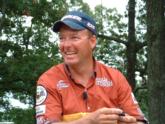 September: Davy Hite wins a record $250,000 cash at the Forrest L. Wood Championship in Moline, Ill.
September: Davy Hite wins a record $250,000 cash at the Forrest L. Wood Championship in Moline, Ill.
1999
January: FLW Outdoors introduces wrapped boats to FLW Tour events giving sponsors premium exposure on the water and television.
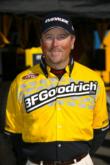 July: David Walker, the 1999 Land O’Lakes Angler of the Year, becomes the first angler to be featured on a box of Kellogg’s Corn Flakes.
July: David Walker, the 1999 Land O’Lakes Angler of the Year, becomes the first angler to be featured on a box of Kellogg’s Corn Flakes.
September: Darrel Robertson wins $250,000 in the FLW Championship at Fort Gibson Reservoir in Wagoner, Okla. Two months later, he wins the Ranger M1 Millennium live on FOX, earning another $600,000.
2000
January: Sponsor teams are incorporated into FLW Outdoors events. FLW Outdoors adopts a pro/co-angler format for all bass fishing circuits.
June: Rick Clunn becomes highest single-season money winner in FLW Tour history, winning $445,300.
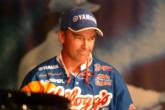 July: Clark Wendlandt becomes the first angler to win two Land O’Lakes Angler of the Year titles.
July: Clark Wendlandt becomes the first angler to win two Land O’Lakes Angler of the Year titles.
September: Dion Hibdon wins $250,000 in the Forrest L. Wood Championship on the Red River in Louisiana.
October: FLW Outdoors holds its inaugural Walleye Championship, paying out a first-place award of $300,000 – the largest award in walleye-tournament history – to Scott Glorvigen
2001
March: Takahiro Omori becomes the first Japanese angler to win an FLW Tour event.
June: Kevin Vandam wins the 2002 Land O’Lakes Angler of the Year title.
September: Forrest L. Wood Championship canceled due to 9/11 terrorist attacks.
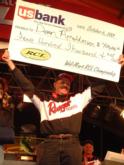 October: Dean Arnoldussen wins the FLW Walleye Championship and earns a record $400,000.
October: Dean Arnoldussen wins the FLW Walleye Championship and earns a record $400,000.
December: Operation Bass name is officially changed to FLW Outdoors.
2002
June: Jay Yelas wins the 2002 Land O’Lakes Angler of the Year title.
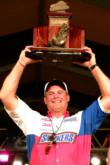 September: FLW Outdoors goes to a bracketed head-to-head style format for the Forrest L. Wood Championship on Cross Lake in Louisiana and awards a record $260,000 to the winner: John Sappington.
September: FLW Outdoors goes to a bracketed head-to-head style format for the Forrest L. Wood Championship on Cross Lake in Louisiana and awards a record $260,000 to the winner: John Sappington.
October: Bruce Samson wins the FLW Walleye Championship and earns $300,000.
2003
April: FLW Outdoors launches the Wal-Mart FLW Walleye League.
 May: FLWOutdoors.com introduces “FLW Live” featuring live streaming audio, leaderboards and eventually video so bass-fishing fans can watch FLW Tour weigh-ins live via the Internet.
May: FLWOutdoors.com introduces “FLW Live” featuring live streaming audio, leaderboards and eventually video so bass-fishing fans can watch FLW Tour weigh-ins live via the Internet.
June: Dan Morehead wins the 2003 Land O’Lakes Angler of the Year title.
September: David Dudley wins a record $500,000 in the 2003 Forrest L. Wood Championship on the James River. Additionally, the championship purse pays $12,200 down to the last-place angler.
October: Tom Keenan wins the FLW Walleye Championship and earns $300,000.
2004
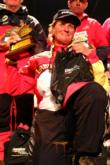 February: Judy Israel becomes first woman to win an FLW Tour Co-angler Division title. The historic win comes on the Atchafalaya Basin in Louisiana.
February: Judy Israel becomes first woman to win an FLW Tour Co-angler Division title. The historic win comes on the Atchafalaya Basin in Louisiana.
April: The Wal-Mart Open on Beaver Lake pays $10,000 down to 50th place – the first time such lucrative payout is offered that deep in a professional fishing tournament.
June: Shinichi Fukae becomes first Japanese angler to win the Land O’Lakes Angler of the Year title.
June: FLW Outdoors announces that all FLW Tour events will pay $10,000 down to 50th place in 2005.
October: Nick Johnson wins the FLW Walleye Championship and earns $300,000.
2005
January: FLW Outdoors signs a television deal with FSN (Fox Sports Net) for 51 weeks of nationally televised tournament coverage.

March: FLW Outdoors launches the Wal-Mart FLW Redfish Series with an event in Sarasota, Fla.
 April: FLW Outdoors launches the Wal-Mart FLW Kingfish Tour in Fort Pierce, Fla.
April: FLW Outdoors launches the Wal-Mart FLW Kingfish Tour in Fort Pierce, Fla.
FLWOutdoors.com
The FLW Outdoors Web site itself has set a few benchmarks in bass-fishing coverage. In addition to daily coverage of FLW Outdoors tournaments, the site compiles an up-to-the-minute “Angler Profile” sections that compiles results, winnings and photos of individual FLW Outdoors’ participants and teams. If you have fished an FLW Outdoors event since 1996, you have your own profile on the Web site.
In 2002, FLWOutdoors.com invited fishing fans to get more involved in the FLW Tour by creating the first online Fantasy Fishing Challenge, which awards cash and prizes to fans who most closely pick the top-five finishers in an FLW Tour event. Each event awards $5,000 cash to highest-ranked player. Should a player pick the top-five finishers in the exact order of their finish, he or she will be awarded $1 million. This year a 2005 Ranger Z-Comanche Series boat will also be awarded to one lucky player in a random drawing of fishing fans who participated in the Fantasy Fishing Challenge presented by Chevy.
